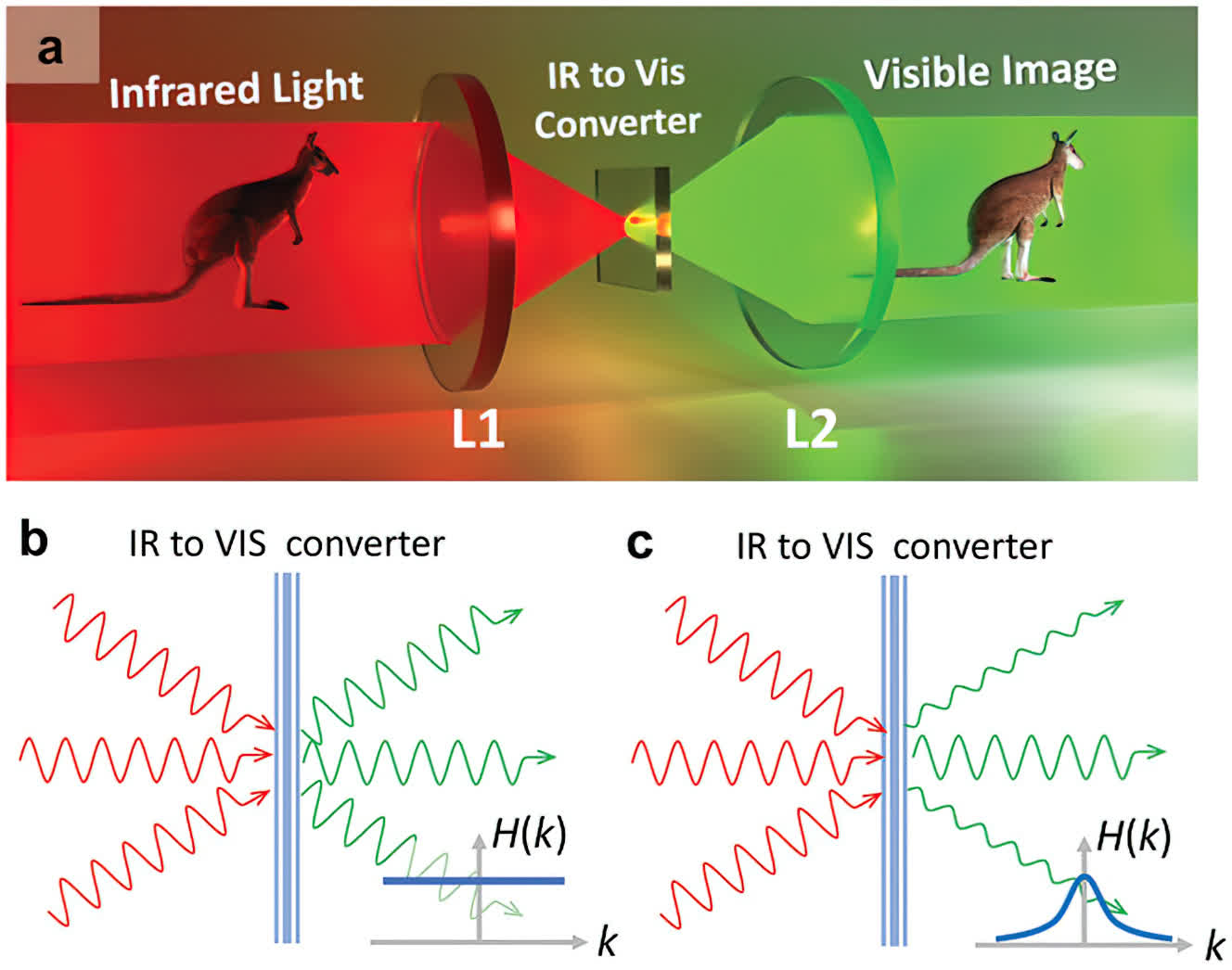Something to look forward to: Night vision goggles have their uses but also many drawbacks, including their weight. A new development eliminates this cost-benefit analysis – in fact, it could revolutionize night vision technologies as we know them. Researchers have created an infrared filter that is thinner than a piece of cling wrap, weighs less than a gram, and can be placed over standard eyeglasses to allow the wearer to see in the dark.
Night vision technologies have a wide range of applications, from sports to military and medical operations. However, they are limited by bulky light-processing and cryogenic cooling components, as well as their reliance on narrow bandgap semiconductors, such as InGaAs, which require low-temperature operation and have high noise levels.
Additionally, these systems often block visible light. This gear can weigh more than two pounds, making it impractical and possibly unsafe to strap on a pair of goggles and go for a nighttime run.
Researchers in Australia have now discovered that using metasurface-based up-conversion technology – an ultra-thin material that can capture infrared and visible light at the same time – everyday eyewear can be augmented with night vision. They published their findings last month in Advanced Materials.

The researchers, from TMOS, the ARC Centre of Excellence for Transformative Meta-Optical Systems, created an infrared filter that is thinner than a piece of cling wrap, weighs less than a gram, and could one day be placed on an ordinary pair of glasses.
A look at traditional night vision technology underscores the complexity of this filter’s task. Traditional night vision requires infrared photons to pass through a lens, encounter a photocathode that transforms these photons into electrons, which then pass through a microchannel plate to increase the number of electrons generated.
These electrons travel through a phosphor screen to be reconverted back into photons, producing an intensified visible image that can be seen by eye. These elements require cryogenic cooling to prevent thermal noise also from being intensified.
In contrast, with the metasurface-based upconversion technology, photons pass through a single resonant metasurface where they are mixed with a pump beam. The resonant metasurface enhances the energy of the photons, converting them into the visible light spectrum – no electron conversion needed. It also works at room temperature, eliminating the need for bulky and heavy cooling systems. Additionally, with up-conversion technology, imaging systems can capture both visible and non-visible light in one image.

The researchers’ original technology featured a gallium arsenide metasurface. Their new metasurface is made from lithium niobate, which is fully transparent in the visible range, making it far more efficient. Additionally, the photon beam is spread over a wider surface area, limiting angular loss of data.
The researchers’ first demonstration of high-resolution up-conversion imaging converted 1550 nm infrared light to visible 550 nm light in a non-local metasurface. They chose these wavelengths because 1550 nm infrared light is commonly used in telecommunications, and 550 nm is visible light to which human eyes are highly sensitive, according to study author Rocio Camacho Morales. “Future research will include expanding the range of wavelengths the device is sensitive to, aiming to obtain broadband IR imaging, as well as exploring image processing, including edge detection.”



